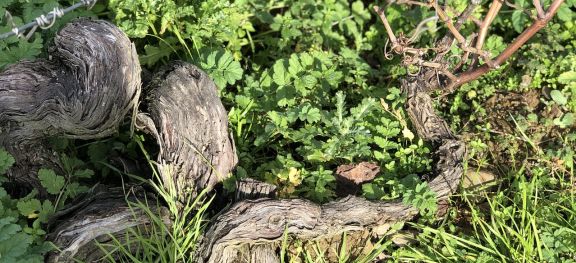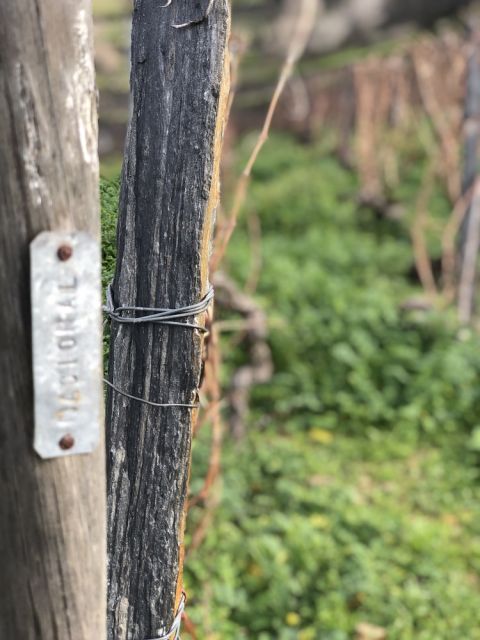WWC21 – Quinta do Noval, Douro


Holly Shaw sent in an introduction that went: 'Holly Shaw, DWS grew up in San Diego and moved to New York when she was 18. While she’s always had a keen sense of good wine, she started studying for the WSET when her third and youngest child was born to prove to herself that her brain was still capable of absorbing adult level material! One class led to another and now she holds the top WSET certification. Along the way, Holly created her blog, “Wine Not Whine,” a parody on parenting and wine, with a tongue-in-cheek sort of wit that surprisingly found success among parents and “regular” wine drinkers alike. Holly now maintains her blog, writes for various publications, and is a wine consultant. She is also a mom to three absolutely perfect, angelic children who never eat sugar.' See our WWC21 guide for more old-vine competition entries.
My steps are uneven across the stony surface and my feet detect hard crust beneath them. Below me is the breathtaking Douro valley and the serene, blue Douro river, and the green hills snaking with vines . The river bends as the hills reach upwards basking in their own beauty. I take a moment to soak up this beautiful view in Portugal and listen to the silence. I am perched on a steep cliff savoring the sound of the birds as they flutter their wings seeking shelter from the heat. This trip is my reward for earning the WSET diploma, a jaunt I’ve planned for almost a year but was nearly sidetracked when I was served a cancer diagnosis a month prior to leaving.
I turn a corner and follow a stony path that leads me to a precious plot of vines called Nacional. In front of me lies 6000 vines to be exact or 1.6HA.
The blistering sun emphasizes the lengths these ungrafted vines must endure to survive, a rarity given that phylloxera devastated the region decades ago. I understand survival these days because I grapple with being diagnosed with cancer at a young age (44 to be exact). I had no family history or genetic disposition. Right now my fate, endless doctor’s appointments and the fear in my children's faces when they ask me what I am doing that day seem miles away as I gaze at the patamars, socalcos, the Douro river and sweeping valley below. The splendor, stamina and longevity of these vines and this ancient land give me strength and hope. Survival here is whispered through the swaying trees as eagles, wild boar and Iberian wolfs seek shelter from the searing sun. The “Douro Bake” as people like to call it- is not meant for the weak.
I like to think Quinta do Noval planted these vines as a direct challenge to mother nature. As phylloxera vastatrix (the devastator) made its way through Europe and destroyed vineyards along its journey. The solution was to graft European rootstock onto resistant US rootstock, which is still used today. These rows in front of me stand tall and proud. “We beat the odds,” they seem to be saying. The unexpected survival of these vines hints at resilience of plant life. These strong vines have earned their place on this earth, this plot was planted almost a century ago in 1920, 50 years before I was born. The average vine age here is roughly 50 years old. When a plant dies here a cutting is taken from a Nacional vine and planted directly in the ground. They are always replanted without grafting on American rootstock. By some miracle these vines don’t succumb to the aphids and allow the Portuguese stock to thrive.
Attached to the side of a post is a silver plaque reading, “Nacional”. The plaque is small and discreet; it doesn't draw attention to itself as a rare find in this part of the world. The name refers to the fact that these vines do not have foreign root stock and are “attached to the soil of the nation”. This plot is the usual mix of Touriga Nacional, Touriga Franca, Tinta Roriz and Tinto Cao and always produces a stand-out port. In fact, the Nacional 1963 vintage achieved legendary status.
There is something precious and special about vinhas velhas (old vines). Experts could spend years trying to figure out how these vines survived while others within reach succumb to disease and die. As the years go on, the roots of these plants dig deeper and deeper in the schist rock beneath the surface. The sheer will of rooting down while facing harsh conditions such as drought, disease and the baking sun produces a small concentrated juicy berry of exquisite taste and value. Why do these vines survive on ungrafted rootstocks and the others fail? Why do some people beat the odds of cancer and others crumble at its feet? I wish I knew the answer to this as I grapple with my own fate.
Today, my life is shrouded with thoughts of mortality given my diagnosis with breast cancer. These vines remind me that life is fragile-one aphid and fatal diagnosis away from death. I bend down closer to the ground and whisper encouragement to the vines for survive. Young vines have promise and vitality, but old vines offer concentration and strength.
No one knows how long these vines will survive ungrafted. Their path is unknown and untraveled, just as my fate lies before me without an outline. Is it the location, micro-climate or a special vintner that tended these vines that enabled their survival? I want to find this champion of the vine who know formula and secret of their longevity. A Gilgamesh of sorts, a youth fountain or a magic potion that makes the vines strong and fruitful, and whisks mortality away. My body begs for this same formula and secret.
Vineyards generate a sense of wonder and tell the story of survival. The schist is legendary here; it is a coarse-grained metamorphic rock which consists of layers of different minerals. It retains water and gives life to the vineyard, even with the intense sunlight. These Portuguese roots dig deeper every year pushing through the earth while the vines seek the sun above. I push my face toward the sun too, soaking in the rays as if this magical formula for resilience and longevity will extend beyond the Douro and accompany me back home to New Jersey.
At this moment, on this terrace, on this hill, I want to savor these old vines. The gnarled trunk twisting and bending. The struggle for survival here permeates my mind with one metaphor and epiphany after another. The biggest epiphany:- life is precious. I am grateful that my cancer was found early on a routine scan, and I will have time to enjoy the life ahead of me.
I turn to take my husband’s hand. He has given me space and time to gaze out at the vineyard alone. He closes his hand around mine. I feel hopeful and grateful as I look forward to feeling strong again. This vineyard gives me hope. My own roots have pushed down deeper than ever in the past few months. My life has promise just like the vines before me.
The photos are provided by Holly Shaw.
Become a member to view this article and thousands more!
- 15,417 featured articles
- 274,327 wine reviews
- Maps from The World Atlas of Wine, 8th edition (RRP £50)
- The Oxford Companion to Wine, 5th edition (RRP £50)
- Members’ forum
- 15,417 featured articles
- 274,327 wine reviews
- Maps from The World Atlas of Wine, 8th edition (RRP £50)
- The Oxford Companion to Wine, 5th edition (RRP £50)
- Members’ forum
- Commercial use of our Tasting Notes

